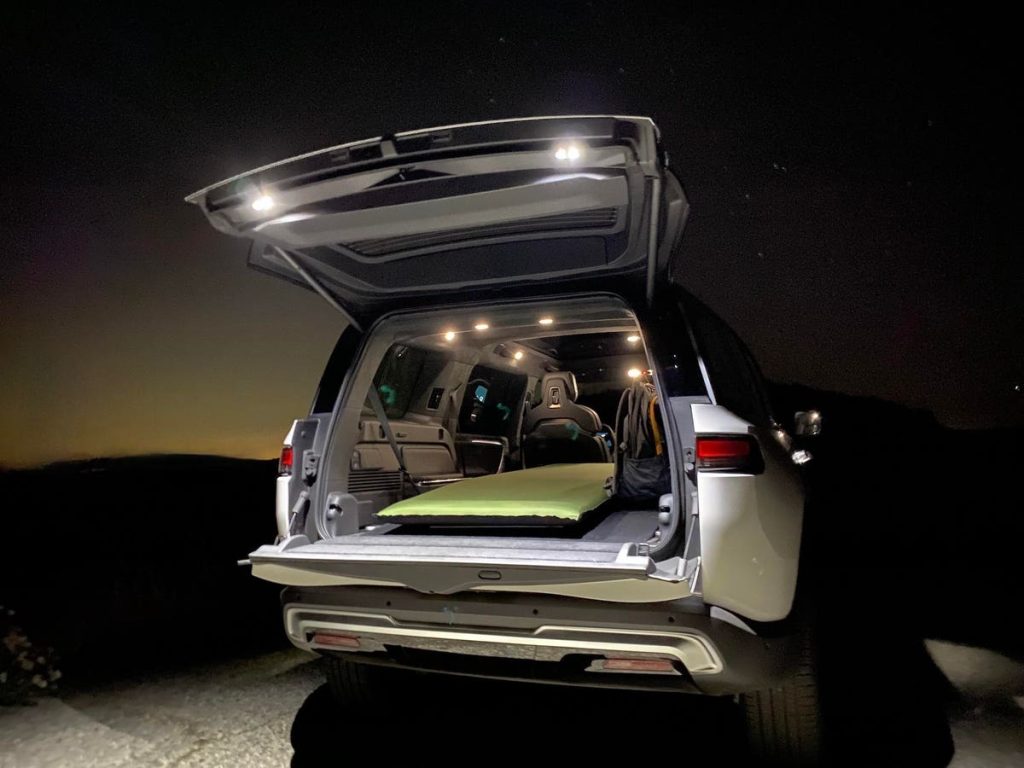With the R1S, Rivian demonstrates that a startup American car company can build a great car out of the gate.
It’s remarkable what Rivian has accomplished in a short time. The Irvine, Calif.-based company only began delivering its R1T pickup in October 2021 and the R1S SUV shortly after that.
What follows is a very brief first-take review. Rivian graciously gave me a week to use the R1S in Los Angeles, where I live.
Recreation electrified — but that price
My daily driver is the humble Chevy Bolt EV. The R1S is at the other extreme.
That’s good and bad.
The bad news is the R1S is very expensive (with a starting price of almost $80K), big, not as nimble as the Bolt, and heavy: about 7,000 pounds vs just over 3,500 pounds for the Bolt — almost exactly half the weight of the Rivian.
Now the good news. The Rivian is fast (I had the quad motor), versatile, well-built, has a ton of interior space (with a third row of seats), and brimming with tech and potential.
The last item is important. It is billed as an “adventure vehicle.” The Rivian is full of possibilities. It is protean in its ability to transform into a home in the wilderness. And that makes it exciting.
The upshot is you could live out of a Rivian R1S in the American outback for weeks if that’s the kind of adventure you’re looking for.
During my use of the R1s, I only had time to drive it up into the mountains outside of Los Angeles for one night. But I could easily see camping long term.
After-market accessories on Rivian’s website include a roof-top tent (image above), a waterproof tarp to create an outside sitting area, and a ton of other gear for cooking.
The R1s and R1T also come with Camp Mode software, which lets you optimize the vehicle’s energy use while parked. Camp mode also levels the vehicle — using the car’s adjustable air suspension system — in order to provide a flat and even surface for sleeping and cooking.
Rivian in survival mode
Rivian has managed to leap frog legacy car companies by offering a very attractive off-road BEV that has enough software smarts to be future proof. And that explains Rivian’s growing popularity at trendy recreational areas such as Lake Tahoe.
Since this is a short first-take, I will not delve into Rivian’s driver assist* technology — called Highway Assist — which is what I really focused on during my week of driving in Los Angeles. Nor will I relate some of the public charging misadventures. These I will address later.
Suffice to say, I believe the company has staying power. It’s still losing money (like Tesla did at the beginning). And is still in survival mode like any startup. But the product is so compelling that I can see why buyers would plunk down $80K.
That said, Rivian needs to come down to earth and offer products for the average car buyer. Along those lines, the company could have a major mass-market hit with the lower-priced R2 platform slated to debut by 2026. The sooner Rivian delivers R2 the better.
——
NOTES:
*Highway Assist roughly compares to Tesla’s Autopilot and FSD.
Read the full article here










